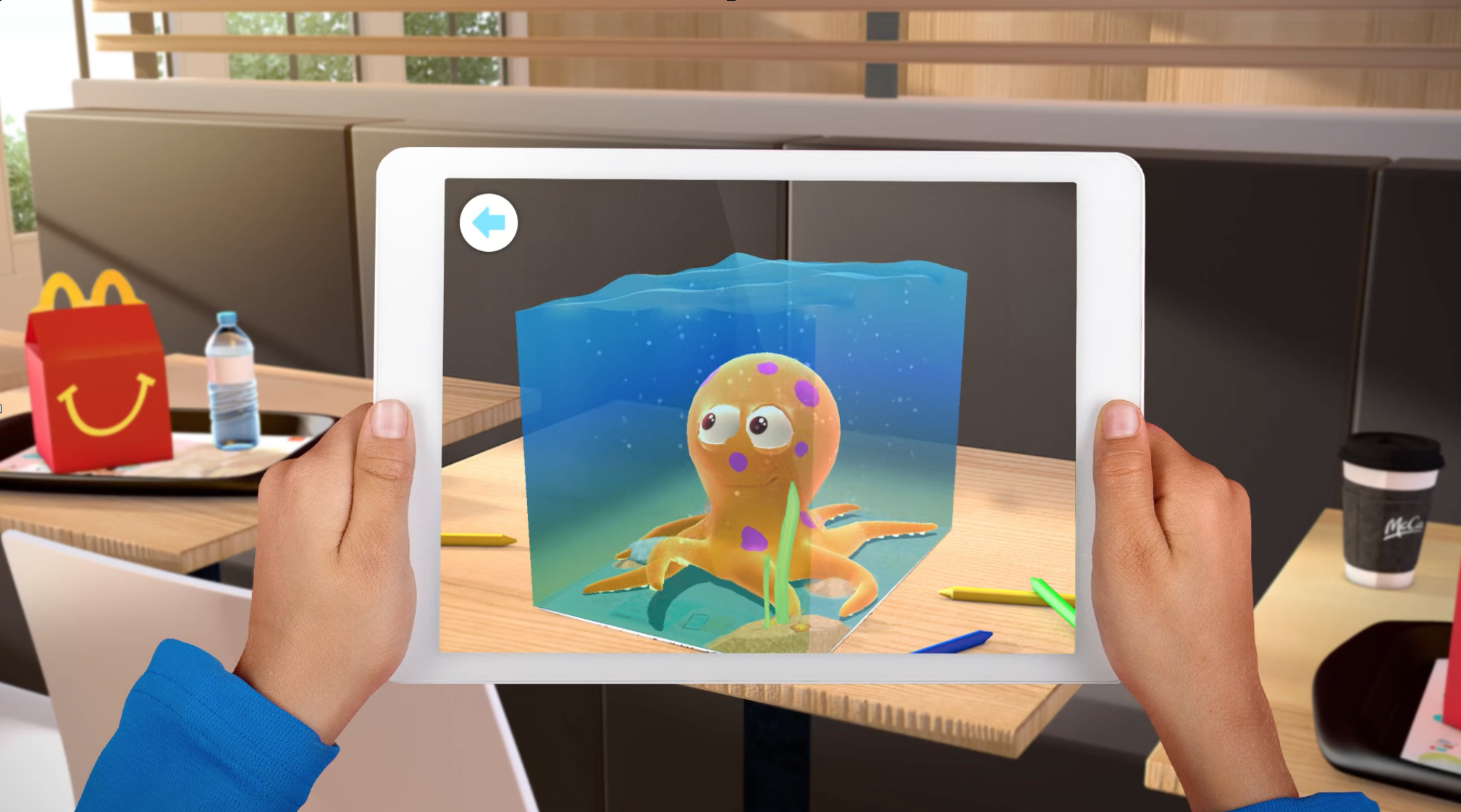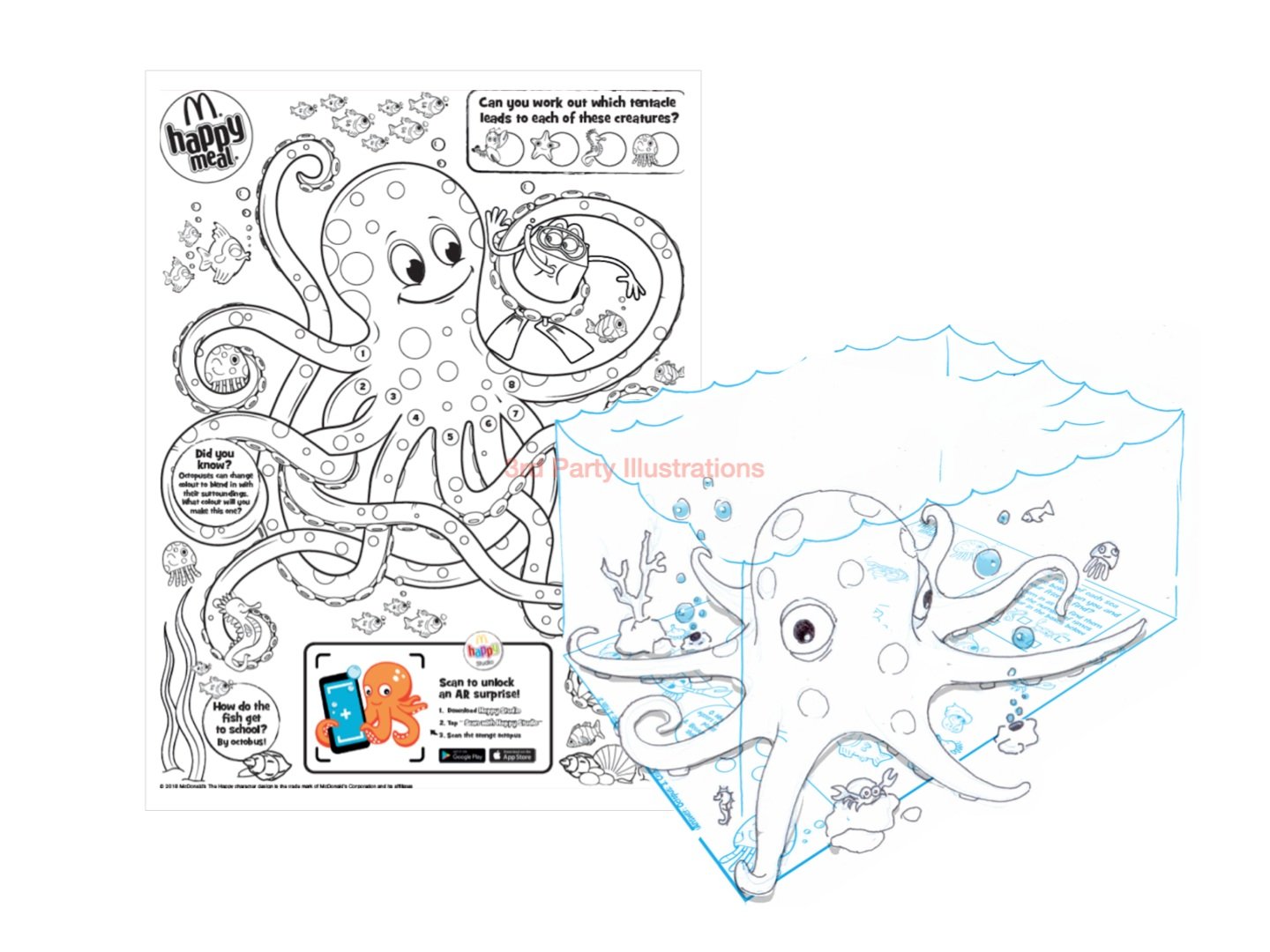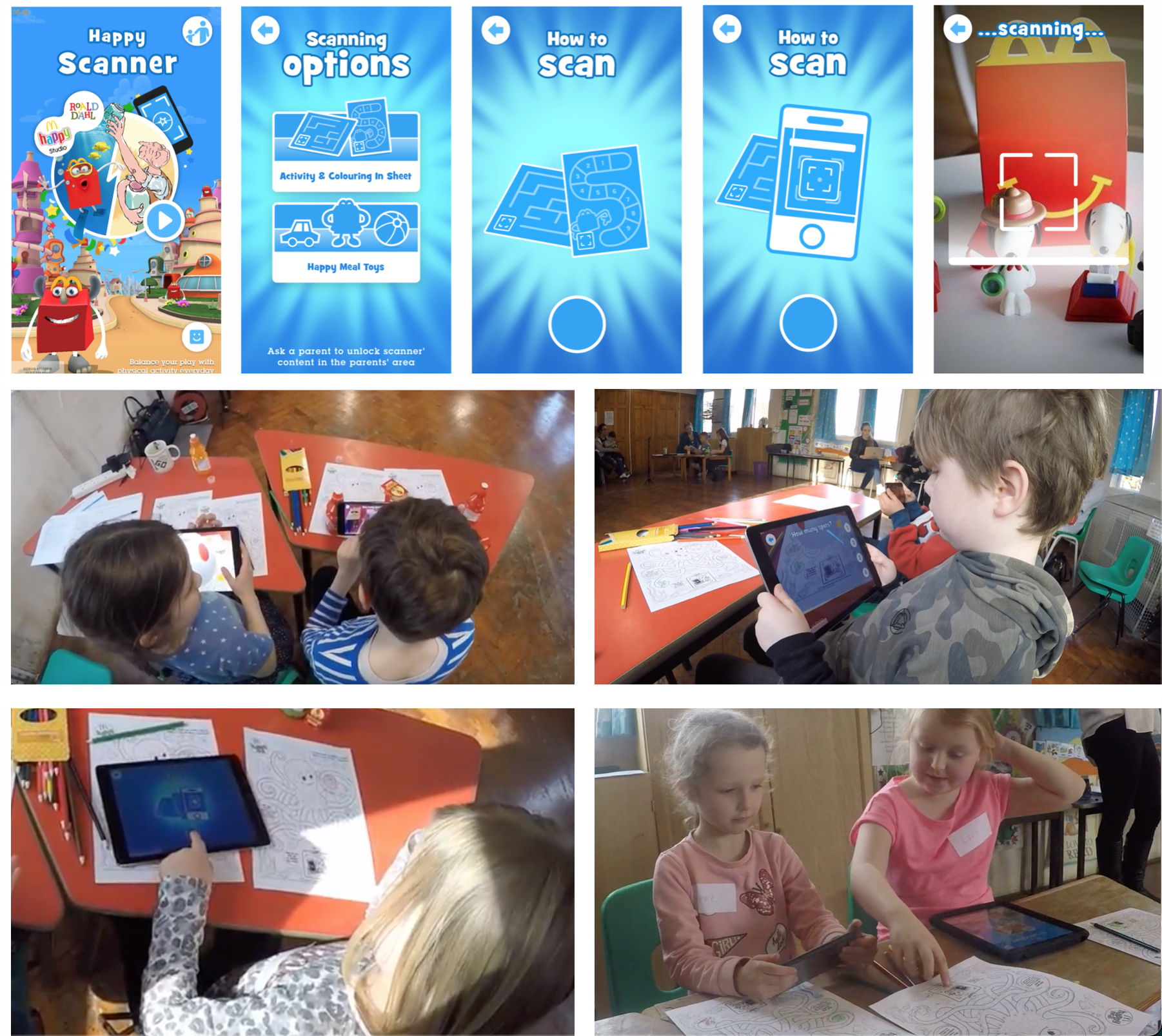McDonald’s Augmented Reality
For Fall 2019 in restaurant experience, McDonald’s wanted to create the first Augmented Reality experience for UK-based children through their Happy Meal App - Happy Studio -, bringing children a new and innovative way of playing. With more than 14.8M+ downloads worldwide, the app is mainly used by children aged 4-8. We were tasked to create a truly meaningful experience that promotes an innovative way of playing.
The experience we developed was created by top creatives and game designers, child development experts, and the help of the McDonald’s Parents’ community.
Role
UX & Art Direction
Year
2019

Technical Exploration & Prototypes
After thorough research of 2019 Augmented Reality trends, for both children and adults, we investigated users' interactions with the physical device and how that is reflected in the digital space, and how devices can be used to create a shared experience between family members.
We were also aware we were designing for a young audience and therefore had to keep in mind the restrictions that come with that.
Sketches of interactions with device and users
Augmented Reality Concept Sketches
We explored how a range of interactions with the physical space could translate in the virtual world, and across different licenses, such as Smurfs, Batman, Super Mario, Life of Pets, and others.
Gaming concept in collaboration with Gaming Studio2
The team knew we wanted to use a physical object to trigger the digital experience, with knowing that we explored using the Happy Meal box or the tray liner as the starting point of the experience. A third-party game design team created prototypes to understand the feasibility and/or restrictions of the concepts and how to accept the experience.
Definition
As we gathered insights and knowledge from the Discovery Phase, the team started defining the final experience. The experience was triggered through the seasonal tray liner, instead of a QR Code, we used a small illustration to attract children’s attention, and support with the steps to take in order to access the experience. We used the tray liner concept to create an educational experience where children were asked to count the dots of the octopus with the help of their families.
Creative Direction
The team defined the art direction of the experience in line with the app’s look and feel and the Happy character look. Focused on the young audience we were aiming for, we created a very explicit and visual onboarding so users could easily trigger the experience. Sea creatures were added to the digital world to add the element of magic and fun McDonald’s is known.
Experience & User Testing
We conducted a thorough user testing with children from our target audience, with the assistance of child development experts. The restaurant setting was replicated and kids sat next to their parents as snacks were served over the tray liner. Most kids identified the illustration after coloring the tray liner for a couple of minutes. With the help of their parents, they read the step-by-step instructions and prompted the experience.
The experience proved successful, with high levels of engagement and curiosity by the children.







